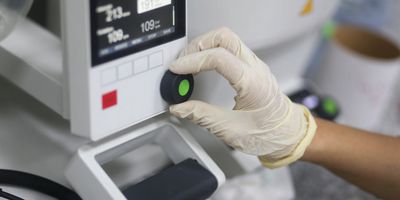Maximizing Sustainability in Rotary Evaporation
Evaporation can be made more environmentally friendly at both the purchase and use stages
A rotary evaporator (also known as a rotovap) is widely used across the chemical industries for the removal of low boiling point organic solvents from samples to isolate synthesized compounds, concentrate solutions for analysis, and/or recycle solvents. Overall, rotary evaporation is an energy-intensive process, but new technologies are available to reduce the energy footprint for labs seeking to improve sustainability.
Purchasing considerations
As a reduced-pressure distillation process, the rotovap reduces the pressure within the system using a vacuum pump to lower the boiling point of the solvent to be removed. By gently applying heat to a solution in a rotating flask, the solvent vapor is then released into the system and captured as a condensate through a cooling system (i.e., glass condenser unit). Because a rotovap is a modular piece of lab equipment, it is possible to interchange heating, cooling, or vacuum pump components to save on energy and material costs.
Water bath
It is advisable to select a water bath unit with the minimum volume required for the application to reduce the amount of water heated. Water bath balls can be added to prevent heat loss and water evaporation. Some models also feature an economy mode to keep the water at a minimum temperature in between runs.
Recirculating chiller
Recirculating chillers are more efficient at precise temperature control in the condenser than traditional tap water circulation or dry ice traps. When selecting a chiller, pick a unit with the appropriate temperature range to reduce energy needs.
There are also self-contained rotovaps with integrated condensers, eliminating the need for a separate chiller unit and improving energy efficiency.
Operational considerations
Temperature settings
The water bath and recirculating chiller contribute most to the total energy costs; thus, following best operational practices for temperature settings can yield lower energy usage. For example, the “Delta 20” rule posits that the water bath temperature should be 20ºC higher and the cooling temperature at least 20ºC lower than the boiling point of the solvent. This guideline can achieve efficient evaporation while minimizing energy consumption.
Programmable units
There are also fully integrated and programmable rotovaps with a central user interface that allow accurate control of each component. These units make it easy to set the heating and cooling rates, vacuum pressure, and flask rotation speed, remotely monitor parameters during a run, and store protocols for consistent performance and efficiency.
Preventive maintenance
Preventive maintenance is critical for optimal performance and ensuring the lowest energy usage. Rotovaps should be included on regular cleaning cycles for the vacuum pump, chiller lines, condenser coils, and water bath. Additionally, the rotovap needs to be checked for vacuum leaks before runs to replace any seals or grease when needed.
Collectively, selecting the right rotovap components for lab needs and following best operational practices can significantly reduce energy consumption during the evaporative process. Lab Manager also regularly publishes product resource guides to help labs select the most efficient evaporator system for specific applications.


